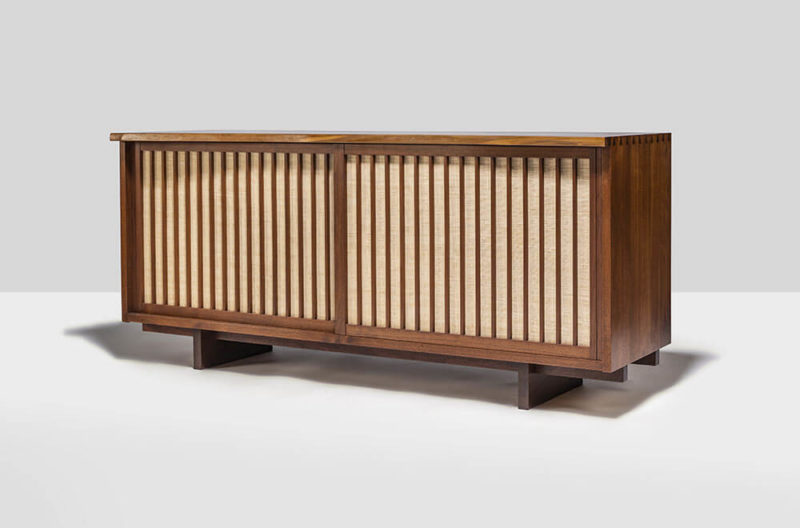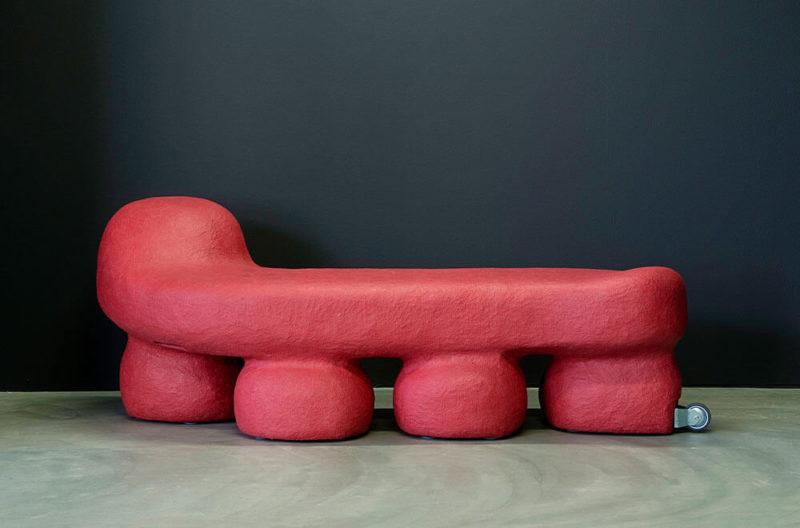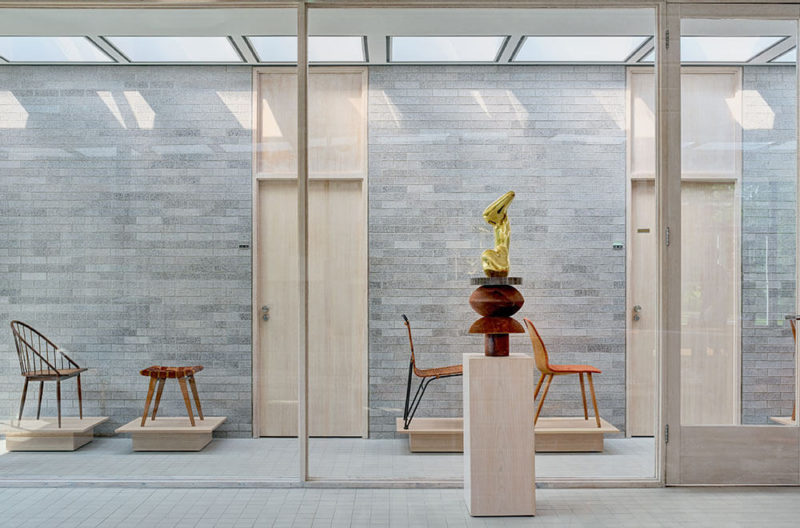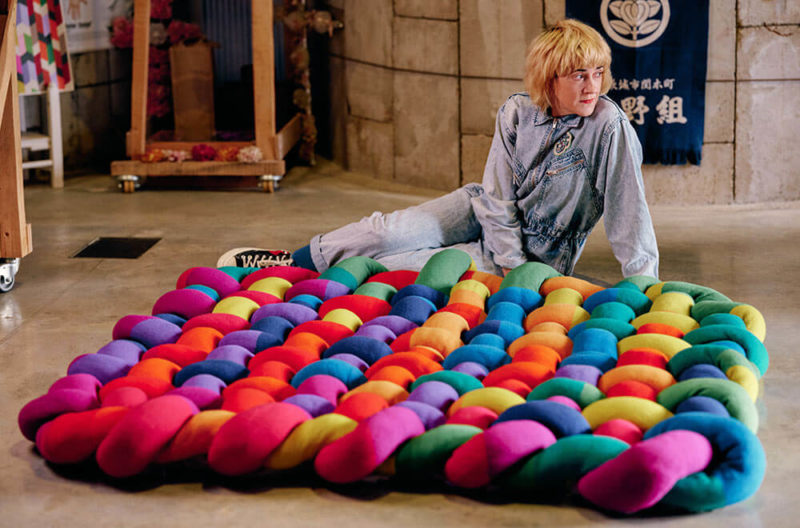The Giacometti: a family of creators
An exhibition that elegantly explores how one family's artistic output crossed freely between painting, sculpture, furniture and architecture.
La Fondation Maeght, Saint-Paul de Vence, France
3rd July – 14th November 2021
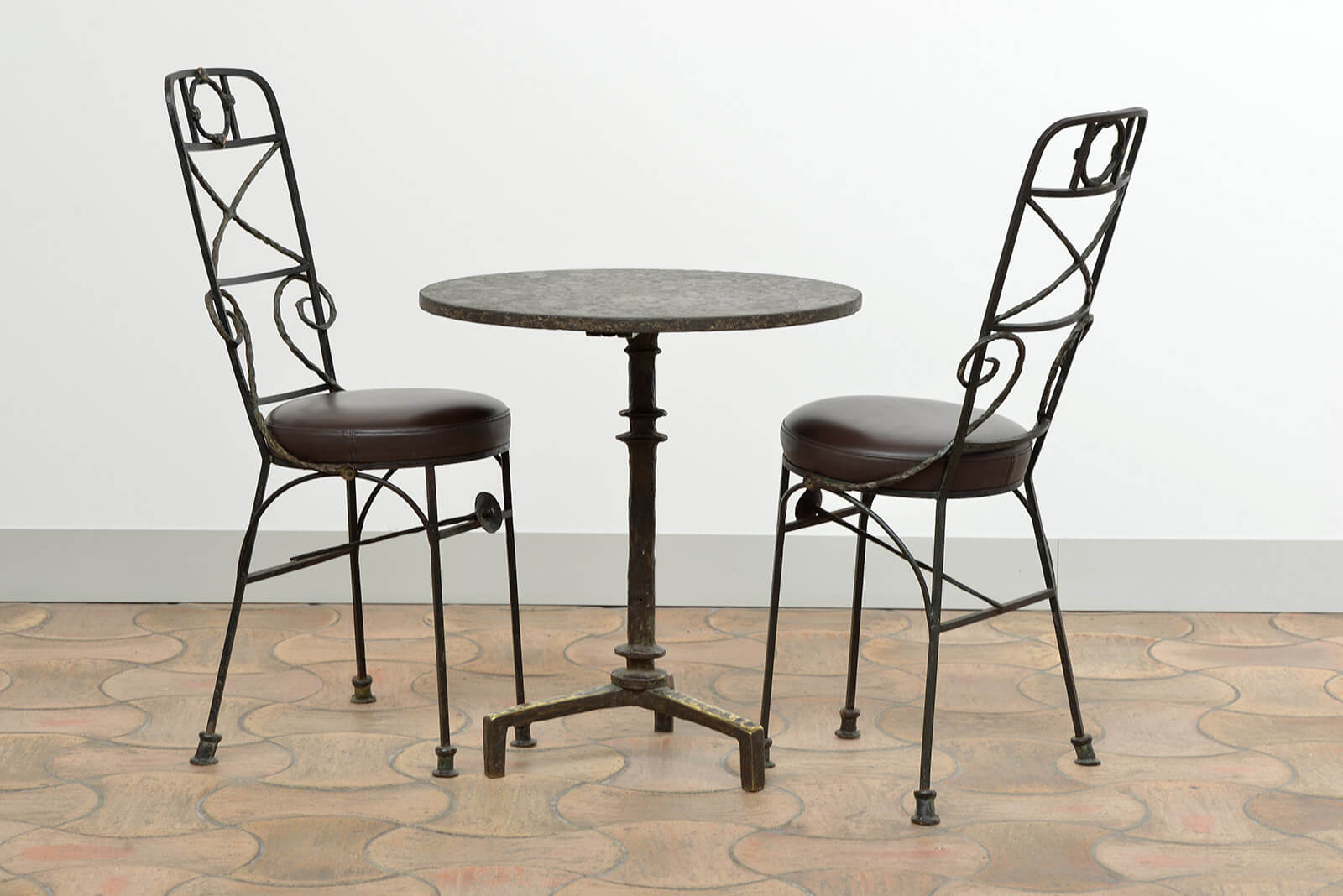
Diego Giacometti, ‘table et chaises du café de la Fondation Maeght’, 1964
COURTESY: © Photo Archives Fondation Maeght / PHOTOGRAPH: Roland Michaud
ATOP A HILL overlooking the medieval village of Saint-Paul-de-Vence in the south of France, the Fondation Maeght was created in 1964 with the participation of many artists, including Alberto and Diego Giacometti. This summer, the foundation is fêting the Giacometti brothers and three other family members in an enthralling exhibition.
The most renowned family member is undoubtedly the sculptor, Alberto (1901-1966). But ‘The Giacometti: a family of creators’ contextualises Alberto’s legacy by emphasising its crossover with younger brother Diego’s more design-orientated work, and by placing their works alongside paintings by their father Giovanni and cousin Augusto and brother Bruno’s architectural plans. The show is curated by Peter Knapp, a former fashion photographer, filmmaker and artistic director of Elle. Knapp became fascinated by Alberto, whom he encountered in Venice in the 1950s. Decades later, he began researching a book on the Giacometti family, which he co-authored with Beat Stutzer. After the book was published in 2017, he approached Adrien Maeght, president of Fondation Maeght, to propose the exhibition.
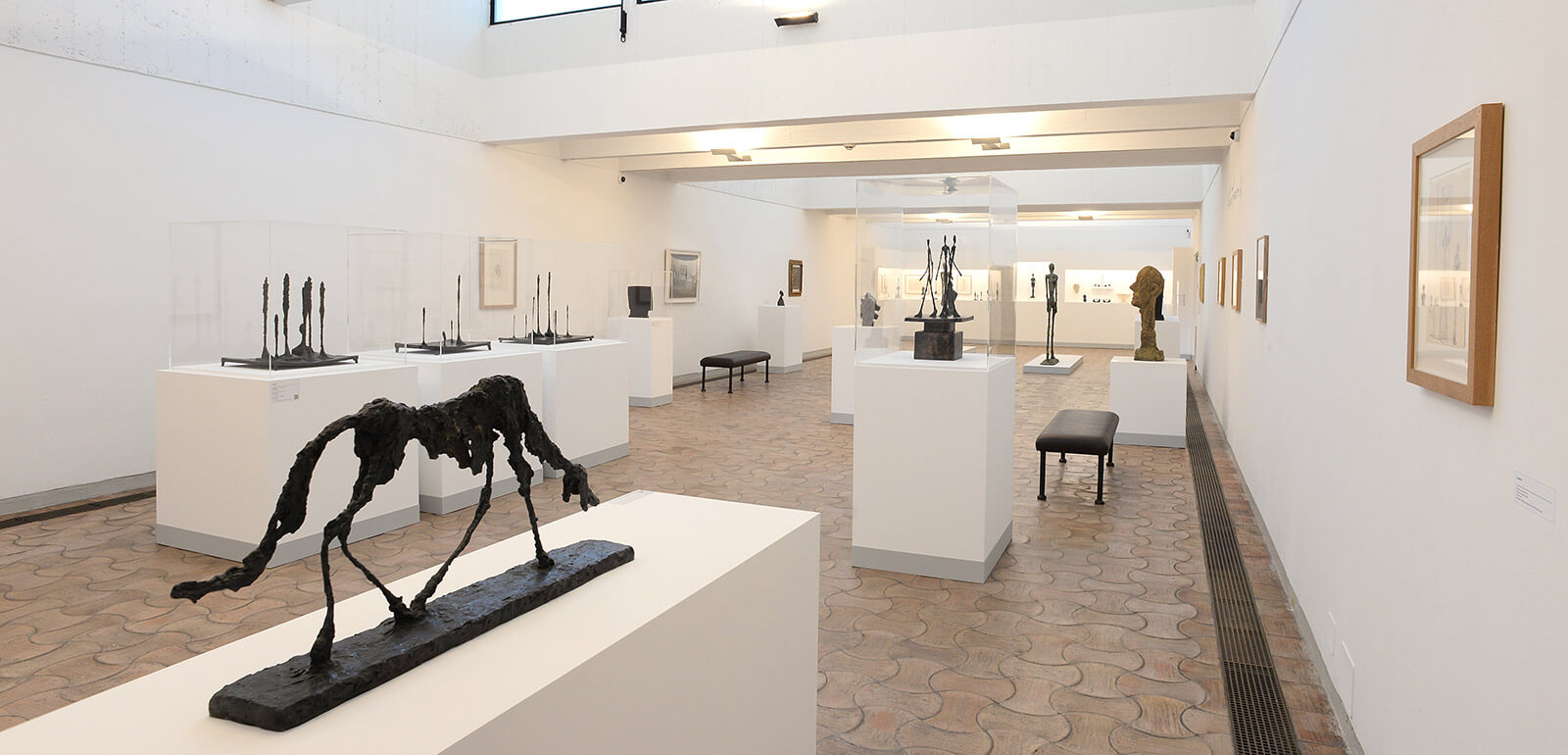
Installation view
COURTESY: © Photo Archives Fondation Maeght / PHOTOGRAPH: Roland Michaud
Maeght, 91, continues the work of his parents, Aimé and Marguerite Maeght, art dealers who, in inaugurating Fondation Maeght, created France’s first private art institution. Catalan architect Josep Lluís Sert designed the building, and many leading artists of their day were invited to create works for the grounds. Two of Alberto Giacometti’s ‘Standing Woman’ sculptures, for instance, are erected in mosaic lotus ponds at the entrance, while the garden café is furnished with chairs and tables specially designed by Diego (1902-1985). Abstract sculptures by Alexander Calder and Germaine Richier are dotted on the lawns and a sculptural labyrinth was created by Joan Miró. Years ago, Merce Cunningham and John Cage held performances here.
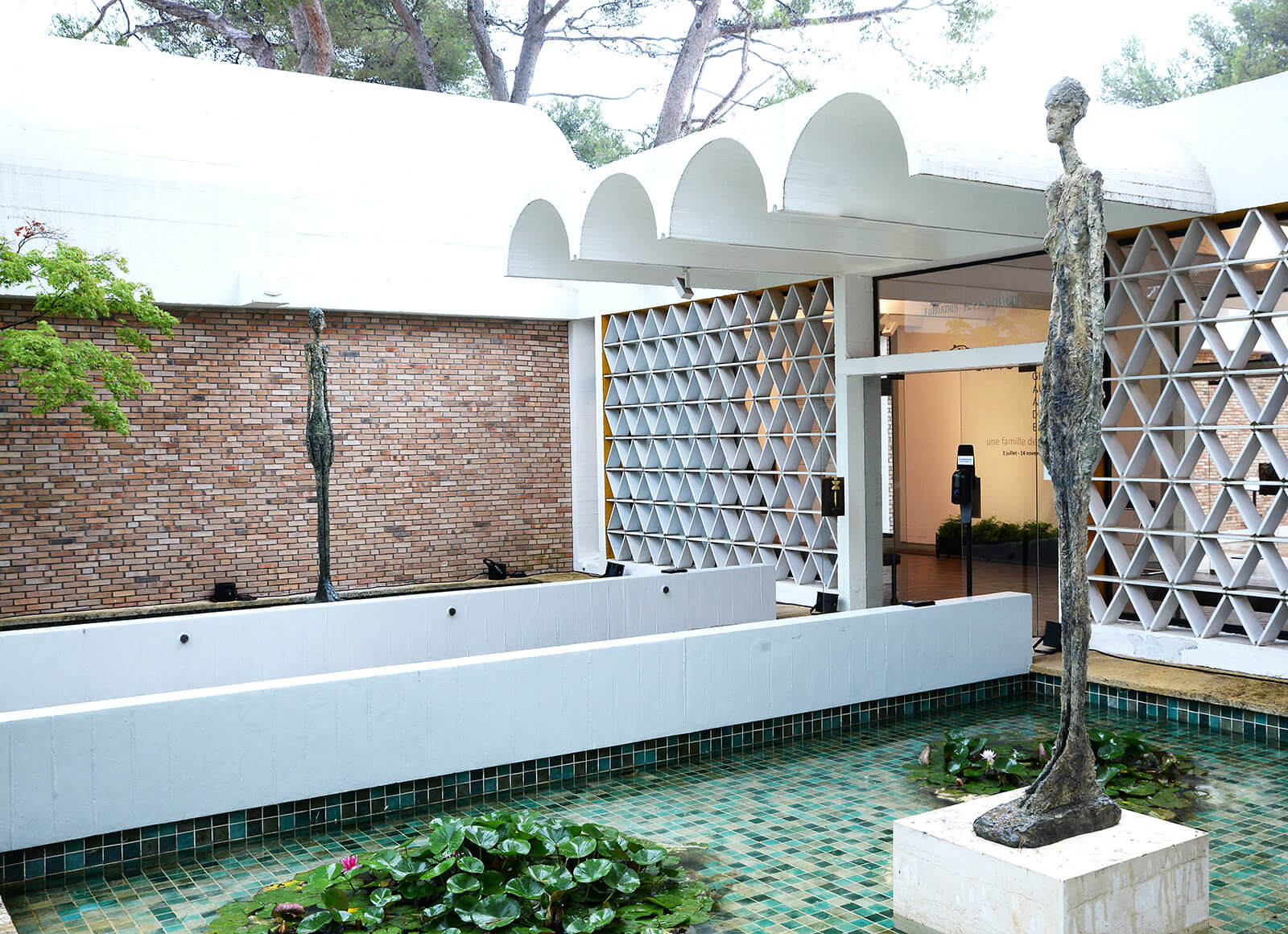
Entrance to the foundation with Alberto Giacometti’s ‘Standing Woman’ sculptures
COURTESY: © Photo Archives Fondation Maeght / PHOTOGRAPH: Roland Michaud
After a spate of shows on contemporary artists such as Jan Fabre and Christo and Jeanne-Claude, today the foundation is keen to stage thematic exhibitions around the artists who played a fundamental role in its history. “Visitors were disappointed that they couldn’t see more works by the artists that the foundation was originally known for,” executive director Nicolas Gitton explains.
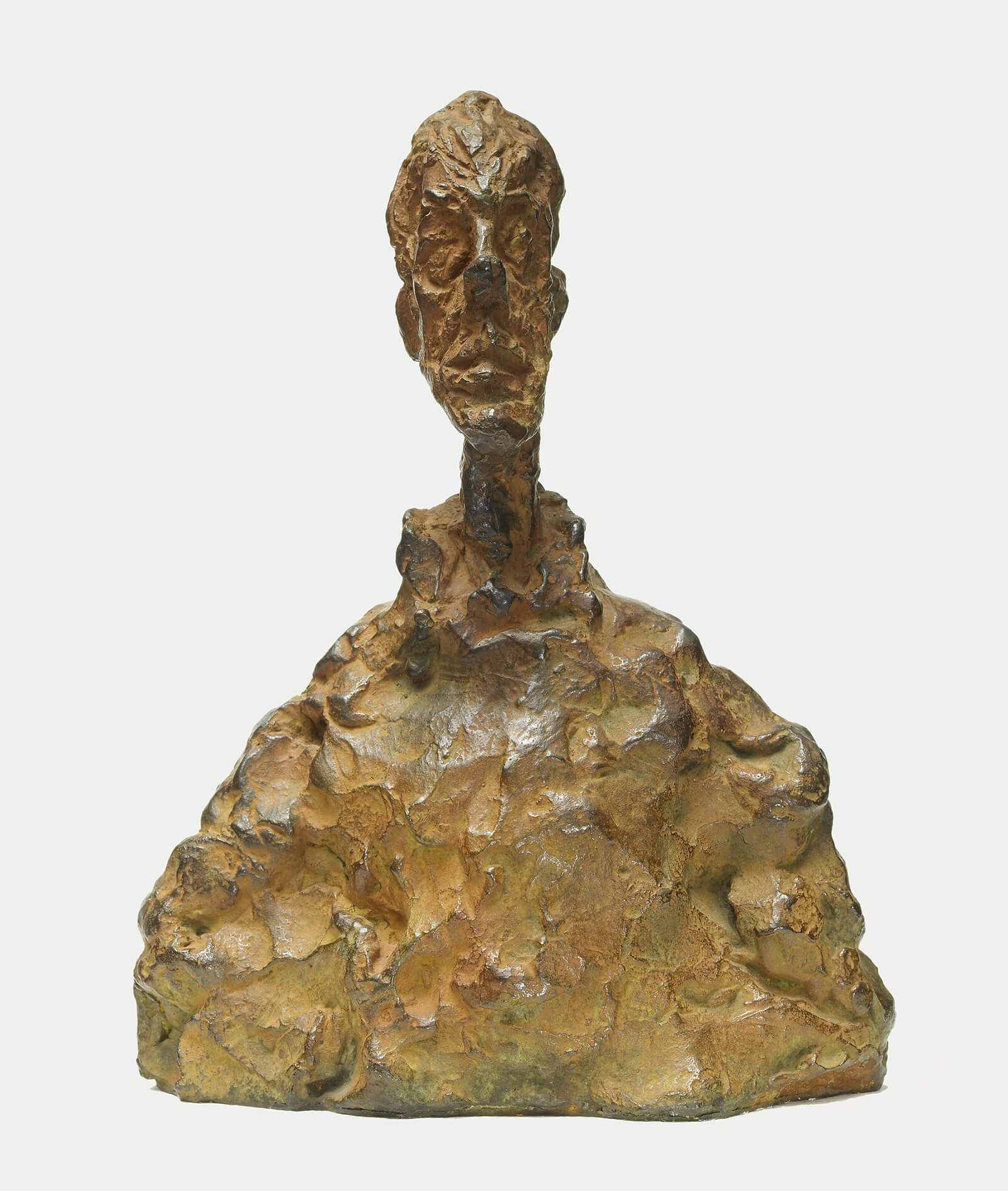
Alberto Giacometti, ‘Buste de Diego’, 1954
COURTESY: © Photo Archives Fondation Maeght
Giovanni’s colour-saturated, figurative and landscape paintings open the show. Giovanni brought up his family in the mountainous village of Stampa in Switzerland, which he depicted in canvases strongly influenced by neo-Impressionism. He made numerous portraits of his children, such as Alberto and Diego as young boys naked by a lake in the summer and another of a 19-year-old Alberto painting outside at an easel.
In the next room, Augusto’s paintings reveal how he experimented pictorially, from chromatic abstractions, to paintings with a mosaic aspect and delicate watercolours. Augusto encountered Dadaist artists in Zurich and his small-scale abstract studies of lines, colours, flowers and butterflies are among his most striking pieces.
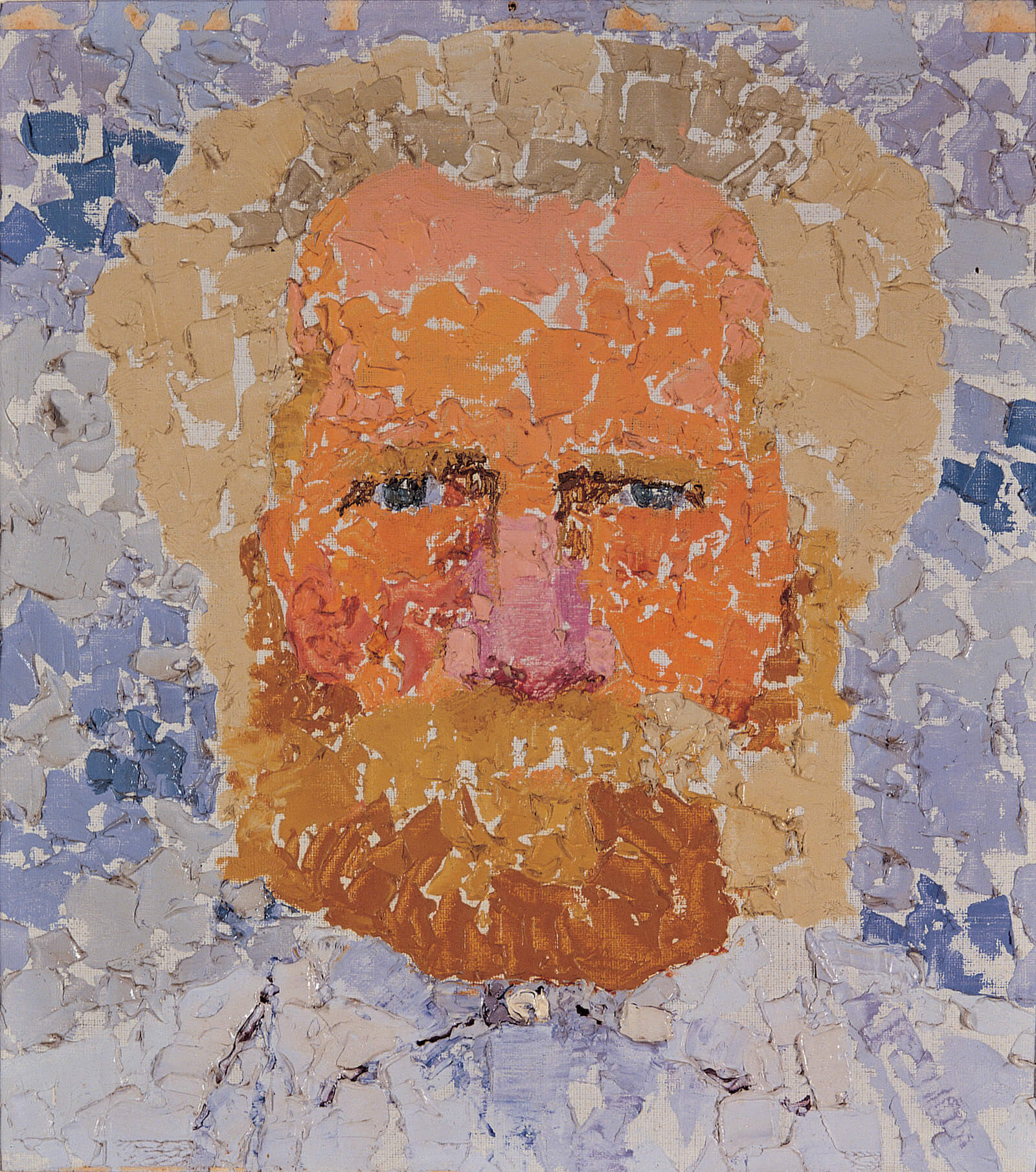
Augusto Giacometti, ‘Mon Père’, 1912
COURTESY: © Bündner Kunstmuseum Chur (Musée des Beaux-Arts des Grisons, Coire)
This segues to a room with intimate showcases of Diego’s work, designed by Olivier Gagnère, followed by a larger space juxtaposing Diego’s pieces with Alberto’s. Diego’s love of animals is evident: from birds on leafy wall lights, a bird and a mouse on a bronze dressing table and chair, or an owl and a lizard among the foliage of a glass topped table. The evocations of animals were based on his early memories of the dense forest near the family home in Stampa.
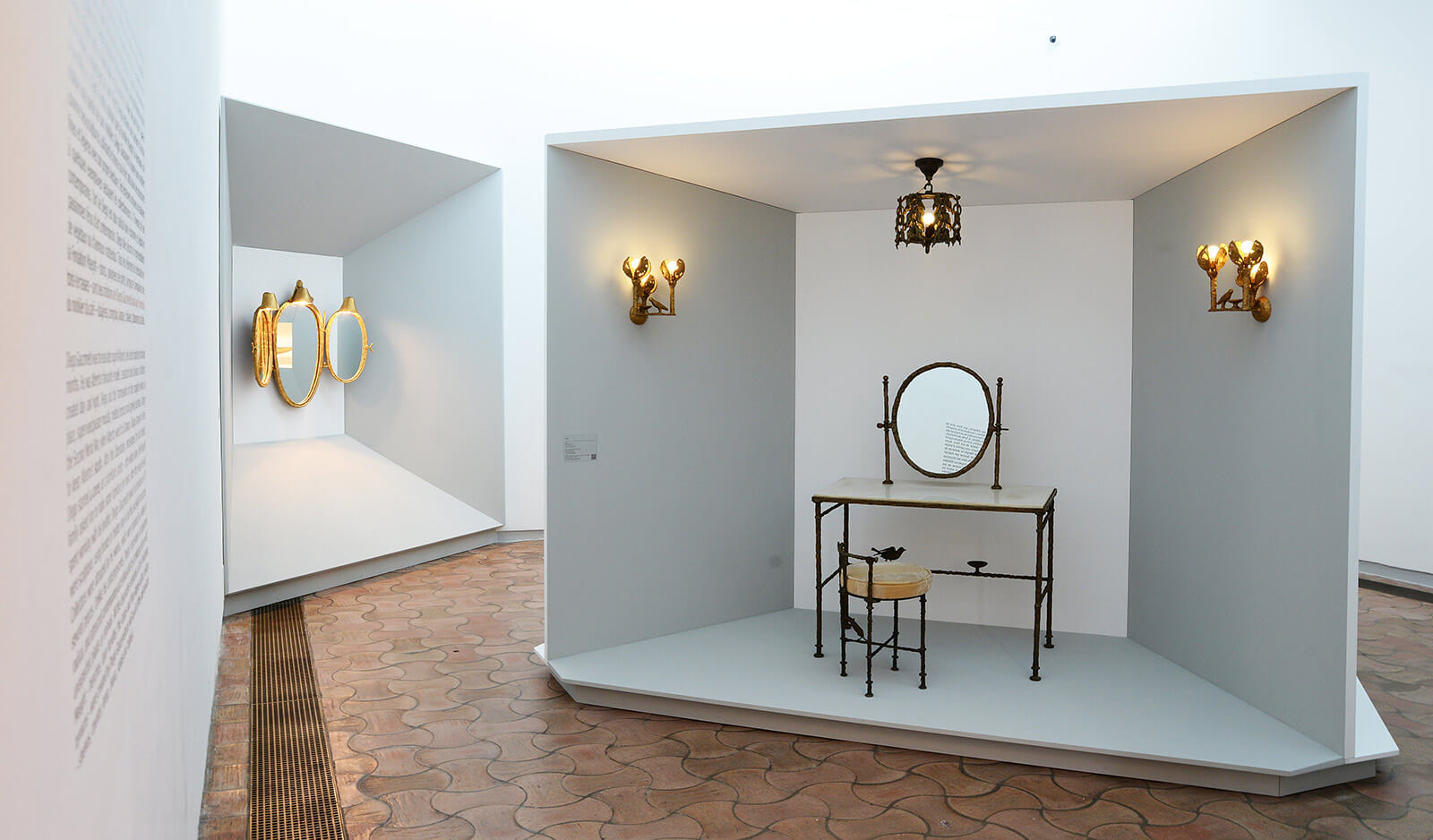
Installation view with Diego Giacometti, ‘Dressing table with bird and stool with mouse’, circa 1960
COURTESY: © Photo Archives Fondation Maeght / PHOTOGRAPH: Roland Michaud
Diego’s wittiest piece is ‘Cage à Oiseaux’ (circa 1959), a bird cage containing a tree and a small cat holding a tray, ‘Chat Maître d’Hôtel’ (circa 1965). Diego had given the cast bronze of the standing cat to the Maeghts as Marguerite had some canaries in a cage. His idea was that the cat’s tray would hold grains for them. “Alberto enjoyed watching the cat covered in canary droppings,” Adrien Maeght writes in the catalogue. “In the courtyard of his workshop there were stray cats that would pass the time chasing sparrows and for him it was a form of revenge.”
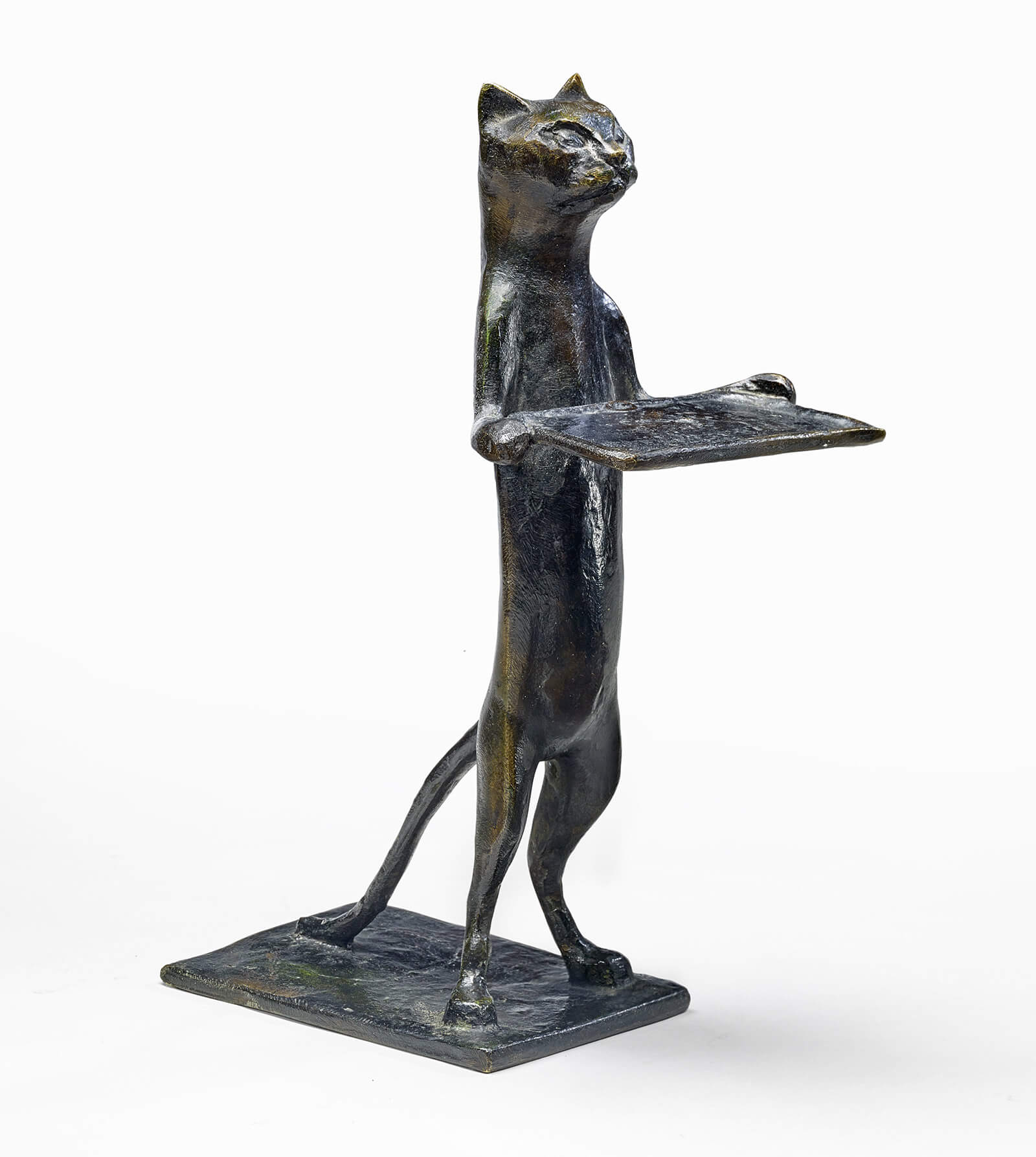
Diego Giacometti, ‘Chat Maître d’Hôtel’, circa 1965
COURTESY: Collection Adrien Maeght, Saint-Paul-de-Vence © ADAGP, Paris, 2021
Displayed next to the bird cage is a pair of graceful chairs and a table that Diego designed for the foundation’s café. Such pieces have become highly sought after. A pair of the chairs sold at Sotheby’s New York for $1.1m in April, flying past the $250,000-350,000 estimate.
What’s most intriguing is the interplay between Alberto and Diego’s work. Alberto’s exquisite chandelier, ‘Lustre pour le Mas Bernard’ (circa 1949), created for Aimé and Marguerite’s home in Saint-Paul-de-Vence, shines above Diego’s bronze table adorned with bats. Featuring a standing woman, a walking man and a bird, the chandelier expresses the reflections on humanity that prevailed in Alberto’s work. The two brothers worked together on the piece. “It was difficult to make attributions,” Isabelle Maeght, Adrien’s daughter and director of Fondation Maeght, says. “When we were putting together the catalogue, we asked ourselves ‘Is it Diego? Or is it Alberto?’”
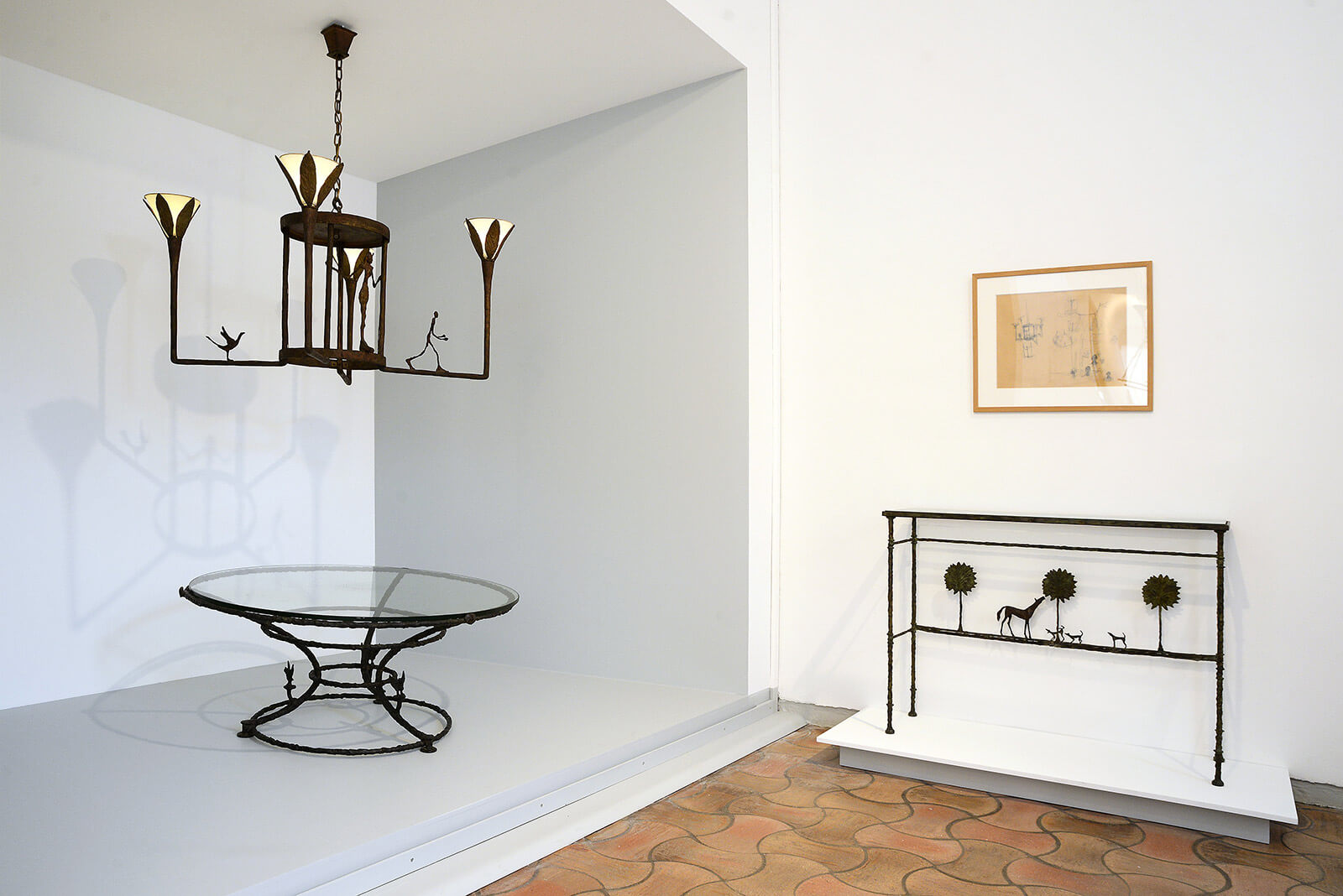
Installation view with: (left) Alberto Giacometti, ‘Lustre pour le Mas Bernard’, circa 1949; Diego Giacometti, ‘Table aux chimères’, 1969; (right) Diego Giacometti, ‘La promenade des amis’, 1976
COURTESY: © Photo Archives Fondation Maeght / PHOTOGRAPH: Roland Michaud
Diego assisted Alberto, 13 months his senior, for many years whilst developing his own sculptural and decorative arts language. Alberto would entrust his brother with the more technical issues, such as creating plasters and applying the bronze patinas. Isabelle’s brother, Julien, comments “It’s difficult to put a tag on them: is it furniture or is it a sculpture? But that’s the wrong question because they’re works of art.”
Both brothers were prolific and versatile. Early on, Alberto created jewellery, vases, wall lights and elegant standing lights for interior designer Jean-Michel Frank, whereas Diego’s creative output extended from door knobs to benches and projectors for Fondation Maeght.
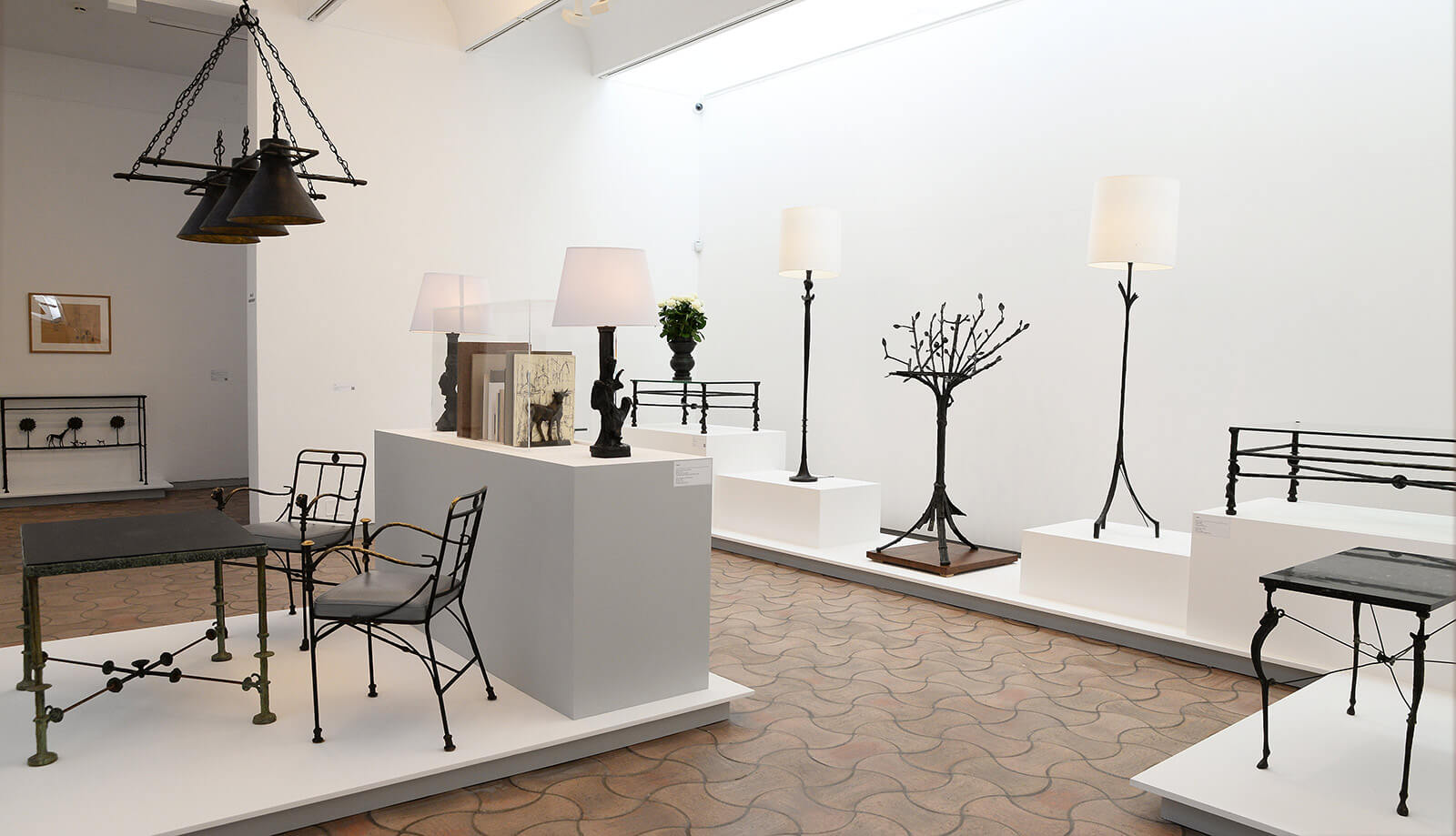
Installation view
COURTESY: © Photo Archives Fondation Maeght / PHOTOGRAPH: Roland Michaud
The last room, called the Braque room, offers an extensive display of Alberto’s sculptures. Besides his masterpieces ‘Walking Man’ and ‘Standing Woman’ are more abstracted and cubist works, female heads and many small-scale ceramic figurative studies.
Alberto also had a penchant for making sculptures of animals, excelling at imbuing them with movement and personality. He made a sprightly walking cat with its head up and a long-limbed, lolling dog with its nose close to the ground. Also on show are his portraits of Aimé and Marguerite Maeght as well as designs for the scarves that he designed for the foundation.
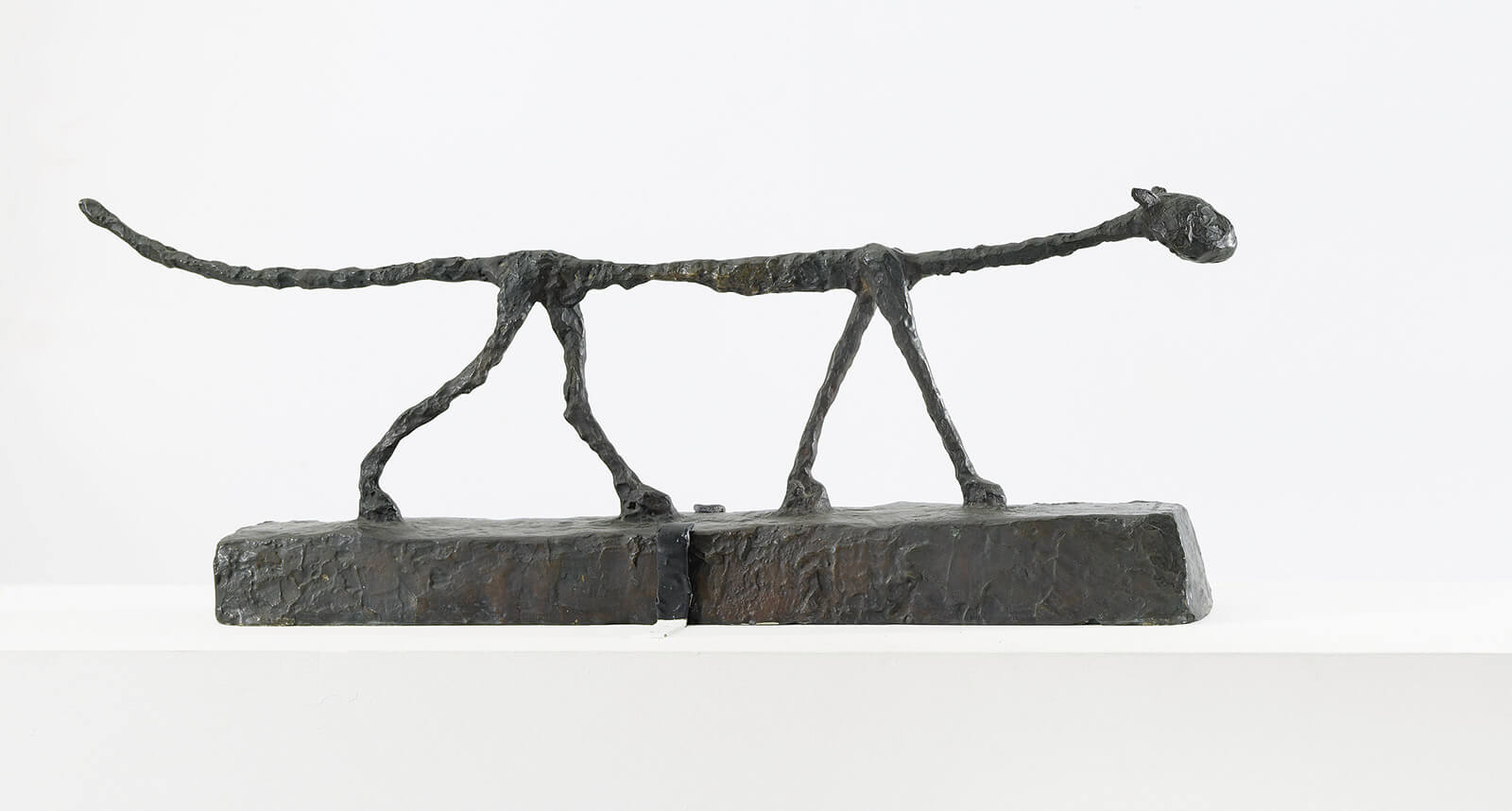
Alberto Giacometti, ‘Le Chat’, 1951
COURTESY: © Succession Giacometti (Fondation Giacometti, Paris et ADAGP, Paris) 2021
The show also reveals how youngest brother Bruno (1907-2012) fits into this picture of the family’s intense creativity. A major modernist, post-Second World War architect, he became internationally renowned for the construction of the Swiss Pavilion in the Giardini of the Venice Biennale in 1952. His plans for the pavilion are among the projects on view. Alberto was asked several times to exhibit in the Swiss Pavilion but invariably refused out of a desire not to be defined through a national identity. However, he did create a series of sculptures, ‘Femmes de Venise’, for the French Pavilion in 1956, for which he was awarded the Grand Prix for Sculpture six years later.
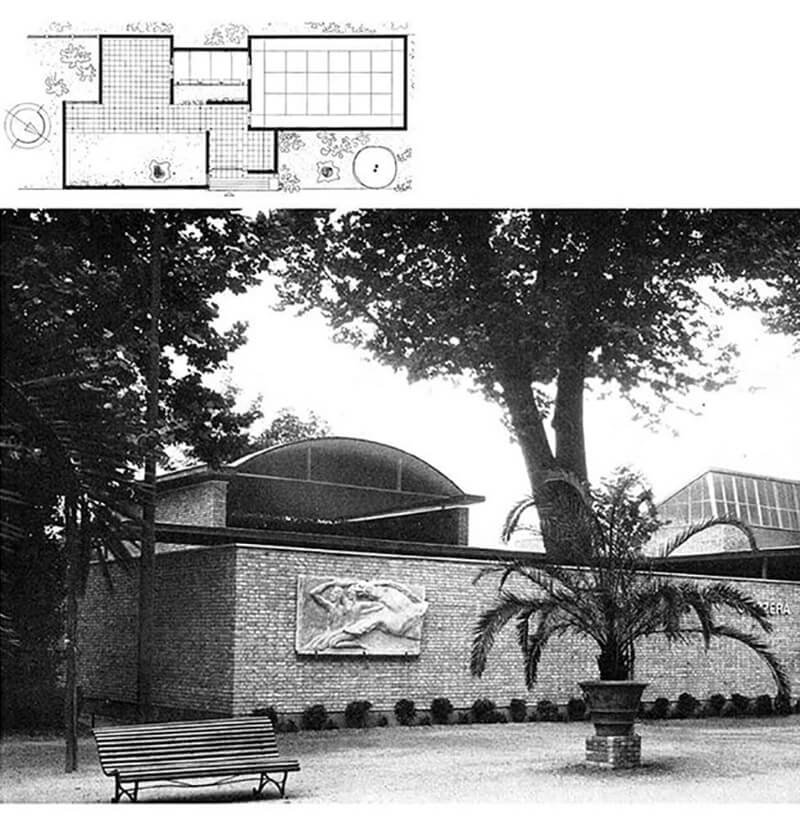
Bruno Giacometti, ‘Pavillon Suisse de la Biennale de Venise’, 1952
COURTESY: © Photo Archives Fondation Maeght
The Giacometti exhibition had been postponed due to the pandemic but the interlude enabled Knapp to borrow more works. Most of the pieces are from the foundation, or private collections that have not been seen before. “Collectors rang each other up, talking about the exhibition, and then more of them called me to say that they had this or that work [that they could lend] and it became much larger,” Knapp says. “There’s not just unhappiness [during the pandemic] but happiness too.” This rather mirrors the inception of Fondation Maeght itself, which had been born in mourning, when Adrien Maeght’s parents, Aimé and Marguerite, were devastated by the death of their youngest son Bernard. The artist Georges Braque, a close friend of theirs, suggested creating something that would live after them. Fondation Maeght is now one of France’s most important cultural institutions and home to one of the largest collections of modern art in Europe.
Running concurrently to the Fondation Maeght exhibition is an Alberto Giacometti retrospective at Grimaldi Forum in Monaco.




